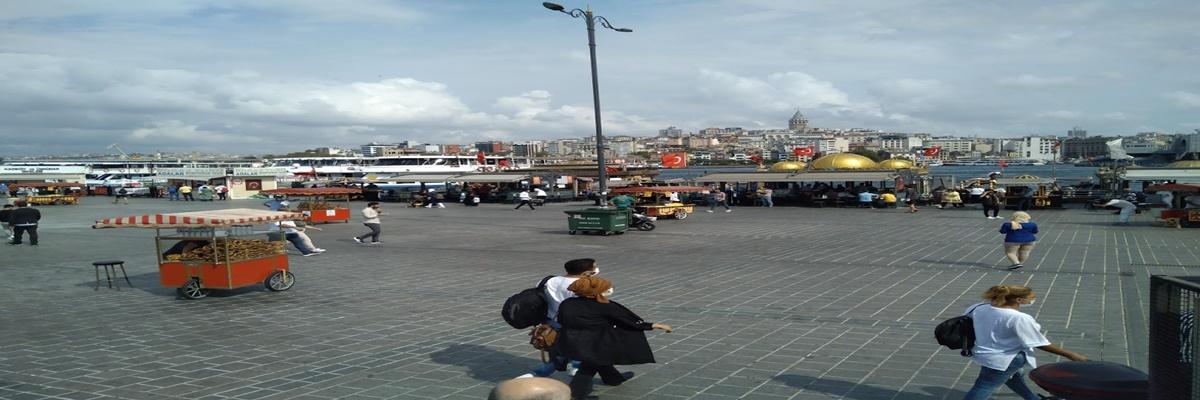The Art Of Wood
Posted on 12 October, 2020 by M.İlker AKIN

THE ART OF WOOD

Wooden arts are a branch of art that has been shaped by artistic movements throughout the ages in many cultures in the world, and seen in every field from everyday use to functional structures. It starts with Turks in Central Asia in terms of traditional Turkish arts; It develops in line with the understanding of art in the periods of Seljuks, Anatolian Principalities and Ottoman Empire. Among the wooden examples that have survived to the present day, there are many different building and decoration materials used in religious and civil architecture. The most prominent of these are pulpit, lectern, lectern, Koran enclosure, balustrade, window-door wing, eaves, ceiling beam, column, column head, ceiling column, frame, quill, lamp, screen, coffee table, table, chair, box , drawer and the like.
Although the types of wood used in woodwork vary, the most common ones are ebony, oak, walnut, apple, pear, boxwood, cedar, linden and rose in terms of durability and ease of processing. The patterns and motifs used in wood art samples have a great wealth. In the early stages of Islamic art, a compiling statement in general was striking; A new synthesis emerges from the fusion of the techniques and styles that the Turks brought to Anatolia with them with local ornamental sources. Botanical, geometric, writing (calligraphy) and figure depictions, even if a little, draw attention in the wooden decorations. In the Ottoman, woodworking craftsmen are called "neccar".
In the art of wood, both ornamental designs established with patterns and decorations created with various techniques are used. Wood carving, known as "naht" in the Ottoman world, is the most commonly used technique. It is applied by cutting and carving the sections between the patterns drawn on the wood with the help of special cutting tools. There are types such as low relief, high relief, deep engraving, curved (mâil) cut, grid carving, lattice carving, decupe. Another method used in wood decoration, in which different carving techniques are used together on the same surface, is "inlay". In this technique, also known as "Tarsi", mother-of-pearl, ivory, bone, tortoiseshell, ebony or gold-silver wires are embedded or glued into the nests opened according to the pattern drawn on the wood. It is also observed that wood of different types and colors is used in inlaid works. Painting on wood is often seen on the cantilevers, beams and columns of mosques and ceiling hubs in houses. Colors such as blue, yellow and red, mostly floral motifs are used. In addition, burning should be counted among the wood decoration techniques. It is applied by burning the surface of the wood to obtain dark areas or by going over the patterns with a heated iron pen.
The items made with lacquer technique in 17th and 18th century Ottoman woodworking are called Edirnekârî (Edirne work) since they are seen frequently in Edirne. Edirnekârî, an art of painting and coloring, is frequently seen on ceilings, doors, cabinets, chests and drawers in residences. This technique, which is applied on cardboard and leather besides wood, is a laborious and demanding job. First of all, the roughness on the material to be processed is removed. Then a coat of varnish is applied so that the surface does not absorb the paints to be applied. When the varnish dries, it is applied using patterns, paints and gold in herbal compositions. After the paints dry, a lacquer (polish) is applied on it several times, waiting for them to dry in between.

The kundekari technique, the earliest examples of which were seen in Egypt, Aleppo and Anatolia in the 12th century, is the interlocking of small geometrical parts with the help of threads only, without gluing and / or nailing. In kündekâride, which is a crossing technique, it is connected by intertwining corrugated wooden beams connecting them with wooden pieces with arabesque relief, which have polygon, lozenge and star form. No nails or glue are used to hold these parts together. Since the pieces are interlocking, block-shaped separations and crevices do not occur due to the wood drying and shrinking over time due to various factors.
Durable trees such as apple, pear, walnut and boxwood are used in the production of Kündekârî. Sometimes there is a frame or pulley on the back surface to increase stiffness. It is applied to areas such as pulpit mirrors, door and window wings, lectern. Since its production is a difficult and demanding technique, there are also works that resemble real kundekârî in appearance but which are given the appearance of kündekârî by methods such as hammering, embossing, gluing, carving, not by snap-cross method. These are called "imitation / fake kundekari".
Today, wooden arts are carried on by using traditional methods and materials with a master-apprentice relationship.
Anatolian Seljuk art had a contemporary preparation period with the arts of Saltuklu, Artuklu and Danişment in the 12th century, but emerged as a style in the 14th century and emerged with abundant and rich data. The Mongol invasion of 1243 could not prevent the development of Seljuk art. Woodworking holds an important place among the various works of Seljuk art. Wooden works bearing the traces of Islamic civilization; doors, windows, cabinet doors, pulpit, lectern and rahle. Carving technique was generally used in Seljuk era woodworking. In this technique, the ornament appears in relief on the ground in the shadow. Sometimes the ornament is split in two layers and the floor is completely hidden. The geometrical ornament and especially the Greek composition constitute the main theme of the decoration. It is the human and animal figures that enrich this ornamentation group and have become a feature of Seljuk art. Peacock, Mühr-i Süleyman and Cypress motifs were also used abundantly in Seljuk era woodwork. Konya Alaeddin Mosque, Manisa Ulu Mosque, Birgi Ulu Mosque, Divriği Ulu Mosque minbars are among the most beautiful wooden works created by the Seljuks. Also; Seljuk woodworking also shows itself on wooden chests. The sarcophagus in Konya Mevlana Tomb is decorated with the characteristic decorations of the period.

The wood art, which developed in the Anatolian Seljuks and gave its most distinguished examples in this period, appears with its fine craftsmanship and advanced ornamentation features. Although there is a variety in the techniques, the most widely used kundekari technique is.
It is estimated that the technique used in Islamic art in the early 12th century in Egypt, Aleppo and Anatolia developed in parallel with each other in these three centers.
The kundekari technique, which gave its first examples with the Fatimids in Egypt, increased in the Mamluk period. The pulpit of Siirt Ulu Mosque dated to the 14th century and the pulpit of Birgi Ulu Mosque dated 1370 are good examples made in genuine kundekari technique. In addition, Ürgüp Damseköy Taşkın Paşa Mosque mihrab (14th century), one of the five wooden mihrabs known in Islamic art, is one of the most distinguished examples of the period.
Although the Seljuk state completed its political life in the 15th century and nearly a century passed, it is possible to see that the Anatolian Seljuk wood tradition, which does not have a homogeneous structure, continues.
Except for some details, Seljuk woodwork techniques and traditions were continued to a large extent in the woodworking of the Principalities.
New techniques were added to woodworking from the Seljuk period in the early Ottoman period. The novelty here is the inlay technique, which consists of inlaid materials such as mother-of-pearl, tortoiseshell and ivory on wood. Precious stones such as tortoiseshell, ivory, gold and silver are inlaid on the tree as well as with different colors and types of trees. The definition of woodworking as art was born from the decoration of the buildings with architectural elements, and the Ottomans made it to the highest level. They benefited from boxwood, lime, oak, walnut, apple, pear, cedar and ebony trees according to their softness.
In Ottoman art, in addition to the carving and grid carving used by the Seljuks, the crossing and kundekari techniques were also widely applied. A richer and more different woodworking has been created with the addition of auxiliary materials such as mother of pearl, tortoiseshell, ivory and even gold and silver.
The most important feature of Ottoman woodworking is the use of the crossing technique as well as the carving technique. Passing through doors, windows and cabinet doors; Womb, drawer, and the Koran wards were started to be made inlaid.
In addition to Rumian compositions, floral motifs were frequently used as decoration in Ottoman woodworking. The decorations after the 16th century have gained a more complex appearance like the decorations in the tiles. The shapes seen in the woodwork of the 17th century in the 16th century continued exactly. New examples were also found in the decoration. In this century, it gradually moved away from simplicity and turned towards a moving and more attractive decoration.
With materials such as mother-of-pearl, tortoiseshell, and ivory applied to woodwork in the 19th century, examples gained a more colorful appearance. In this century, baroque and rococo influences, which attract attention in almost every branch of Turkish art, also manifested themselves in woodwork.
Wood is used in windows and door wings of various buildings, balustrades, networks, minbars of mosques, Qur'an enclosures, lectern, drawers, sarcophagi and lectern, as well as a wide application area in columns, column heads, consoles and beams of mosques called "wooden pillared mosques". finds. In Anatolia, especially walnut, boxwood, lime, oak, apple, pear, cedar, ebony and rosewood were used.

Seljuks mostly applied carving (relief), networked carving and painting techniques in their woodworking. In the carving technique, which is widely used, the motifs are revealed in relief by carving the tree surface with a pencil. This type of work is called "deep engraving" if the pen goes too deep, and "curved cut" if it works in a slope.
It is seen that especially wooden minbars in mosques are handled with great care. On the side mirrors of the minbars of the principalities, we find very successful applications of the kündekârî technique, which has been applied in Anatolia since the Seljuk period. Kündekârî, which is a crossing technique, is connected with rumi embossed wooden pieces in the shape of octagon, lozenge and star, and wooden beams connecting them together like grooves. No nails or glue were used to hold these parts together. Since the pieces are interlocking, splitting and splitting do not occur with the drying of the wood.
Woodworking, which developed with the Seljuks in Anatolia and revealed an original style, gave very successful examples. Ottoman wood masters followed the Seljuk and Principalities period masters and focused on carving, networked carving and kündekârî (passing) techniques. The Ottomans did not innovate the techniques known before them, rather they created appealing compositions in different styles. In addition, they developed kündekârî and included inlaid and mother-of-pearl mosaic techniques.

Surface Carving:
Surface carving, which is one of the leading engraving techniques used in woodwork, can be classified into groups according to its production. It is a technique made to enrich the surfaces, to give an aesthetic appearance and a certain movement. In this technique, the ornament is completely raised as relief by carving the surface of the tree with a sharp pen. If the pen goes too deep, it is called deep engraving, if it is worked more inclined, it is called surface or mail cutting. The main motifs used are rumi, arabesque, flower, geometric shapes, inserts and inscriptions.
Low depth surface carving:
If we are to classify the small depth surface carving within itself, we can divide it into two. We can divide it into flat surface carving with less depth and round surface carving with less depth.
Low-depth flat surface: The wooden surface is at the same level and flat surface.
The depth of the motifs does not exceed three or four millimeters from the surface.
Round surface with little depth: The wooden surface is flat and rounded at the same level. The motif to be made will be in accordance with its original lines. It is easy to process and clean. It is a type of carving that is always applied in terms of its elegant appearance.
Multi-depth surface carving:
Carvings made with a depth of more than 4mm from the surface to be carved are called multi-depth surface carving. It is a less deep, deeper and more mobile application than surface engraving. While the engraved motifs appear more vivid, the motif is very difficult to process.
Very deep smooth surface: Creates a flat surface in wood. Motifs are engraved on the surface with deep engraving. In the same work, it is seen that some motifs were made with this technique and some motifs were carved with a very deep round surface.For example, door corners on the front facade of the Ankara Alaeddin Mosque pulpit (1197--1198)
Malatya Ulu Mosque pulpit (13th century), Kayseri Ulu mosque pulpit door badges (1205) The inscription of the pulpit of the Amasya Burmalı minaret mosque (13th century). Alasehir Kileci Masjid window wings (end of the 13th century), Ankara Ahi Şerafeddin sarcophagus (1350. Ethnography museum), examples of this technique are presented.
Very deep round surface: In this wood technique, which gives a very rich appearance, especially in inscriptions, inscriptions, and carvings, reliefs are processed to create a bumpy round surface. In some examples, the reliefs are very high and give the effect of the lattice (openwork) technique. We see such carvings in various lectures exhibited in Konya Mevlana and Istanbul Turkish and Islamic Arts Museums, in Siirt Ulu Mosque pulpit inscriptions (Ankara Ethnography Museum), Ankara Kızılbey Mosque door (Ethnography museum), Kızılbey mosque pulpit (1264-83), Ankara Aslanhane Mosque pulpit doors. . These very abundant examples can be reproduced in more works.
Curve cutting technique:

This technique has been used for plant decorations of wooden artifacts in Anatolia. In such carved compositions, the geometric element is in the form of one or two thin grooves in the form of lines circling the entire surface.
Kündekari Technique:
The kundekari technique, which is generally used on the side surfaces of minbars and doors, requires great skill. We find the earliest examples of Islamic art in the 12th century in Egypt, Aleppo and Anatolia. The technique is thought to have developed in parallel to each other in these three centers. The most important feature of kundekarin is that it prevents the tree from working by being affected by the change of temperature and humidity in changing seasonal conditions. Since the fibers of the trays are placed opposite to each other and one prevents the other from working due to moisture and heat, the wings in the kundekari technique maintain their flatness for centuries and do not distort at all. This technique is achieved by interlocking small geometrical pieces. Since the wood juices and veins of these parts are placed opposite to each other, the disadvantages that may arise from working of the wood over time have prevented to some extent, the door wings have maintained their smoothness for many years. Kündekari technique can be examined in two main groups as real and imitation kündekâri.
Genuine Kündekari "ÇATMA":
In genuine kundekari, which is a Cracking Technique, the octagonal, lozenge and star shaped wooden pieces are interlocked with corrugated wooden beams that connect them with arabesque reliefs. No nails or glue were used to hold these parts together. Since the pieces are interlocking, if the wood dries and shrinks, there will be no splitting or splitting. There is a wooden frame under the interlocking kundekari surfaces to ensure strength. The piece to be made by connecting the geometric wooden pieces to each other with negative or positive insertions starts from one end and is knitted like a basket and the whole is reached. Small detailed or coarser examples can be found processed in the very difficult kundekari technique.
Imitation Kündekari:
It is a more coarse and less skillful group of genuine kundekârin. In these examples, octagons, stars, diamonds and so on. It is obtained by dividing into geometric shapes. The beams that make up the cage are nailed with wooden laths.
Imitation kundekari is divided into three groups according to the technique of making.
Striking and Relief Kündekari:
The pulpit side mirrors or door wings are completed by passing the same wooden blocks side by side in kundekari technique. In these wooden blocks, octagonal, lozenge and star shaped parts decorated with arabesque decoration are embossed with a relief. Between these protruding surfaces, the sinks forming the geometric cage are nailed. In a technique that apparently separates power from the real kundekari, octagonal, star and diamonds do not have nails (since they are integral with wooden blocks), the laths in between are attached with nails. If the wooden blocks dry and shrink, separations are seen between the panels. This imitation is a beautiful example of kundekârin which is the closest to its original and requires mastery. Ankara Alaeddin (1197--1198), Kayseri Ulu (1205), Kayseri Huand Hatun (1237), Ankara Kızılbey (in the 13th century Ankara Ethnography Museum), Divriği Ulu (1228-299), Ankara Arslanhane (1289-90) Çoruh ULU ( 1306), Mosque minbars are examples processed with this technique.
Fully Fastening and Bonding Kündekari:
Fully nailed and glued kundekari presents the more coarse and less skillful examples of the imitation group. In this workmanship, octagons, stars, lozenges and wooden beams forming the geometric lattice were nailed onto the wooden blocks. Examples are of late cycle. Ankara Ahi Elvan Mosque pulpit (1382), Merzifon Çelebi Sultan Mehmet Madrasa outer door (15th century) and Amasya Mehmet Pasha mosque door (Amasya Gök Medrese Mosque Museum) can be cited as examples for this technique. There should be more examples belonging to this group, which apparently do not resemble kundekari with flashing relief. However, it is difficult to detect as it can be understood by casting the parts inside the geometric cage. As the wooden blocks dry and shrink, here too, separations are seen between the blocks.
Fully embossed kundekari:
Fully embossed kundekari is quite common. They used window shutters with less thickness under the doors and pulpit doors. In this group, which gives the most abundant examples, the octagons are in relief of the block. The reliefs are not too high. Its geometric cage and arabesque inner fillings do not show a certain level of separation. In this type of material, there may be splits in various directions with the drying of the wood. Kayseri Ulu (1205) in Ankara Ethnography Museum, Ankara Baklacı Baba (1268), Ankara Kuyulu Hoca Pasha (13th century), Amasya Gök Medrese Mosque door (13th century in Amasya museum) Some of the window wings of Birgi Ulu Mosque (1322), In the pulpit of Ayaş Ulu Mosque (14th century), we see the application of this technique with various patterns and compositions.

Cage (Openwork) Technique:
Fully embossed kundekari is quite common. They used window shutters with less thickness under the doors and pulpit doors. In this group, which gives the most abundant examples, the octagons are in relief of the block. The reliefs are not too high. Its geometric cage and arabesque inner fillings do not show a certain level of separation. In this type of material, there may be splits in various directions with the drying of the wood. Kayseri Ulu (1205) in Ankara Ethnography Museum, Ankara Baklacı Baba (1268), Ankara Kuyulu Hoca Pasha (13th century), Amasya Gök Medrese Mosque door (13th century in Amasya museum) Some of the window wings of Birgi Ulu Mosque (1322), In the pulpit of Ayaş Ulu Mosque (14th century), we see the application of this technique with various patterns and compositions.
In this technique, which is encountered in Anatolian Seljuk woodwork, especially used in pulpit balustrades, the partitions separated by the composition are completely carved out or the composition consists only of completing the composition as a lattice with laths. Wooden slats are made of geometric forms, stars, etc. It is obtained by striking together to form. Wooden pieces are driven into a cage shape. Sometimes, polygon and star sheets with vegetable motif fillings are added between lattice beams. An openwork image is obtained by carving the tree surface according to the motif. This type of engraving is also called grid engraving. We see this as an example on various pulpit railings in Ankara Kızılbey, Arslanhane, Ahi Elvan, Beyşehir Eşrefoğlu mosques. Rarely, among the wooden beams, polygons filled with arabesque and stars enter. Thus, it provides a richer view than the cage. In Ankara Alâeddin, Kayseri Hunand Hatun Çorum Ulu Mosque minbars, wood workmanship was used in this way. The hexagonal and six-pointed star carved into the plate in the pulpit of the Divriği Ulu Mosque makes a star and octagonal composition on the laths of the minbar railings of the Beyşehir Eşrefoğlu mosque. The balustrades in the Aksaray Grand Mosque minbar are a composition of twelve genes carved into one-piece plates. In this last example, only the octagons are fully carved, the other compartments are carved into non-deep plant motifs. Eşrefoğlu pulpit railings are repeated in the same composition and technique in the pulpit of Birgi Ulu Mosque.
Simple Cage Technique
It is a technique that is done without placing any other decorative parts between the roof cage.
Interfill Cage Technique.
Inside the wooden beams, polygons filled with arabesque, stars enter, so the lattices gain a richer appearance.
.Cutting (Decupe) Carving:
Carving made by cutting and discharging a motif drawn on surfaces of certain thickness with a jigsaw, rattail saw or jigsaw is called cut carving. The faces can remain straight or can be shaped according to the desired shape. Cut carvings are widely used in decoration, furniture, musical instruments, lattice frames and ornaments.
Applique carving:
The use of the parts cut with the cutting carving technique after shaping the outer surfaces according to the motif is called applique engraving.
Here, the parts obtained one by one are called Appliques, and the bonding of these appliques to a surface is called Applique. After the appliques are cut, they are pasted on a smooth surface by putting paper in between. Its upper surface is shaped by carving pens to fit a half-round herringbone or motif. After the surfaces are cleaned with sandpaper, they are removed from the surface. The papers on the base are removed. Adheres to the main surface in desired compositions. Applique carving is widely used in decorative works such as door and drawer surfaces of semi-classical furniture, cornices.
Natural Shape Carving (Three-Dimensional Sculpture Carving):
It is the most difficult carving technique, it is necessary to have a special ability to have enough anatomy and biology knowledge to be able to perform sculpture. Because its subject is generally alive. It is to enliven the living creature with all its features. Great artists who grew up on this subject have given us many works that reflect the life of the age.
Inlay Technique:
This technique, which was very common in the Ottomans in the 14th and 15th centuries, materials such as mother-of-pearl, ivory, tortoiseshell, were applied as thin plates and the edges were decorated with fillets. The material used in inlay can also be glued side by side or embedded in the slots opening to the tree surface. It has been widely used in furniture such as sofa, coffee table, mirror frame.
Painting technique:
In addition to carving, painting technique is also used optionally in woodwork. This technique, which started with the decoration of architectural elements in the Seljuks, developed in the 17th and 18th centuries in the Ottomans and was made by painting the vegetal motifs of the geometric layouts on the doors and minbars as a kundekari imitation. After the 18th century, depictions such as flowers and fruits originating from Europe were used to decorate civil wooden architectural elements.
Hand Tools Used in Wood Workshop:
Over the centuries, people have invented molds and tools to do their jobs more easily and more effectively.
These tools are often called tools. These are very diverse, some of them are quite simple, others are quite complex. Complex vehicles are rather classified as machinery. Many machines have been amazingly developed. Tools and machines provide a great degree of mechanical superiority, precision, speed, efficiency and sometimes safety in the performance of a job. A person who chooses and uses the appropriate tools could do a good job, but on the contrary, if only relying on craftsmanship or crude and primitive tools were used, perhaps he could not do anything. People develop old tools and invent new ones with their work to provide greater efficiency. In today's construction methods, the use of new tools has increased the quality and appearance of the tools as well as their productivity. Tools and their special functions are classified according to the principles of mechanics in simple machines.
As a matter of fact, cutting tools used in woodwork (knives, saws, graters and flat pens) wedge-shaped driving and screwing tools (hammers, automatic screwdrivers and drill arms) are examples of lever, inclined plane, flywheel and shaft, respectively. Application of wedge, inclined plane and screw are drilling tools. Indeed, some tools are composed of a few simple machines. Complicated motor tools are obtained by applying each of the six simple machines seen in mechanics. These; wedge, lever, inclined plane screw, pulley with impeller and shaft. Name and classification of woodworking tools according to the work performed, indicates their use and purpose, so the screwdriver is a screwdriver; saw a cutting tool; miter is a control and marking tool. Knowledge about simple machines that fit the working principle of a tool helps us to understand the functioning of this tool and its essential parts in order to achieve mechanical superiority and efficiency. Woodworking tools are limited according to the work done: measuring, marking and checking, cutting and drilling, screwing, driving, fastening and tightening and sharpening tools. Except for measuring, marking and control tools, all tools are lever, wedge inclined plane, flywheel and shaft, brand and screw samples.
Wedge: The mouth and teeth of tools such as knives, graters, flat pencils, engraving pens, files, saws, hand axes and the cutting edges of various drills are examples of wedges. Threaded ones have a series of cutting wedges. Woodworking cutting tools wedges of cutting tools separate wood fibers from each other by cutting, shredding, digging and splitting.
Leverage: Leverage is used in the use of some tools that require force or pressure. Sometimes the fulcrum is on part of the arm. Sometimes it is a specially made feature of this tool. Staples, tongs, pliers, vise handles and hammer levers are some examples.








